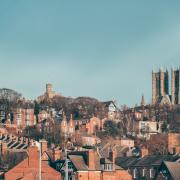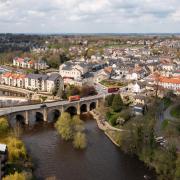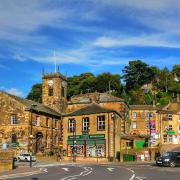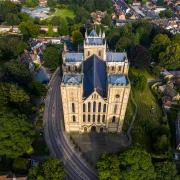David Marsh wanders through one of the most treasured open spaces in Leeds

For five days in May over 150,000 people from home and abroad will flock to see the many splendours of the annual RHS Chelsea Flower Show. But there is a corner of Leeds where award-winning exhibits from the world’s most famous horticultural show can be seen all year round. The Gardens of the World attraction in Roundhay Park boasts four gardens produced for Chelsea by the city council which carried off top awards, including two golds. The city’s 2010 entry, sponsored by Leeds-based Hesco Bastion, made history by becoming the first local authority-produced garden ever to win a gold medal in the outdoor show garden category. It was an eye-catching exhibit that included striking 12ft-high lock gates and a mock canal.
Leeds struck gold again the following year and the two gold winners were brought back to Leeds and re-assembled alongside the silver gilt-winning 2008 and 2009 entries at Roundhay, helping to attract visitors to a park that has been described as ‘one of the jewels in the city’s crown’ and which largely defines this bustling and popular north Leeds neighbourhood.
Julia Wilson, chairman of the Friends of Roundhay Park, a group formed in 1994 to help maintain and improve the park and which now has over 600 members, said: ‘Obviously the park is a great asset to the city and the Chelsea gardens are a splendid attraction. They are very popular and draw in people from all over the world. You find a lot of ex-pats from Leeds head for the park when they are on a visit home.
‘Recently we had an email from a guy living near Disney World in America who was desperate to support our work. People are often willing to support us with financial contributions which are always encouraging and appreciated.’

With more than 700 acres of parkland, woods, lakes and gardens, it is one of the biggest city parks in Europe. Land on which the park now stands was used as hunting grounds by the De Lacy family of Pontefract Castle. In the early 19th century the park estate was bought by the banker Thomas Nicholson, who created the Upper Lake and the bigger Waterloo Lake, which covers over 33 acres and was built by men who had returned from the Napoleonic wars. Nicholson also commissioned architect John Clarke to build the Mansion which, following a period of closure over 10 years ago during which time its future use was hotly debated, has been refurbished and re-opened as a cafe, restaurant and venue for weddings and other functions. It also houses a visitor and education centre.
By the early 1870s the park was in the hands of the council and since then it has played a key role in providing leisure and entertainment facilities to the people of Leeds. In the 1980s the park’s huge arena – capable of holding 100,000 people – hosted some of the biggest names in rock and pop, including the Rolling Stones, Michael Jackson, Bruce Springsteen, Madonna, Simple Minds and U2.
Today one of the park’s biggest attractions is Tropical World. Developed with a generous donation from businessman and philanthropist Arnold Ziff and now officially called the Arnold and Marjorie Ziff Tropical World, its exotic collections of plants, butterflies and animals – crocodiles, meerkats, ring-tailed lemurs, lizards, snakes and many more, attract over one million visitors a year.
Fewer than 200 people lived in Roundhay in 1822 but all that was to change. By the second half of the 19th century Leeds was a growing city and Roundhay grew with it. New housing was developed and transport links improved. In 1891 what is understood to be the country’s first public electric tram with overhead power ran between Roundhay Park and the city centre. The tram terminus is now a car park but some of the trolley poles remain.

It made the park, along with the wider area, far more accessible and modern-day Roundhay is a thriving suburb with a range of shops, pubs, cafes and restaurants to be found along busy Street Lane. Echoes of its past are to be found in the remaining 19th century villas built for the well-heeled of Leeds. These grand houses are signs of its affluent past and its continuing popularity is evidenced by 2013 Land Registry figures showing the average house price at just over £230,000, compared to a city-wide average of £171,000.
Julia added: ‘I have always found Roundhay a lovely place in which to live. There has always been a sense of community here and that has got even stronger. Over the last few years we as a Friends group have worked with the Friends of Gledhow Woods and the Roundhay Environmental Action Project on a number of initiatives and events and I’m sure those efforts will continue.’
Find out more about the Friends of Roundhay Park at forp.co.uk



























